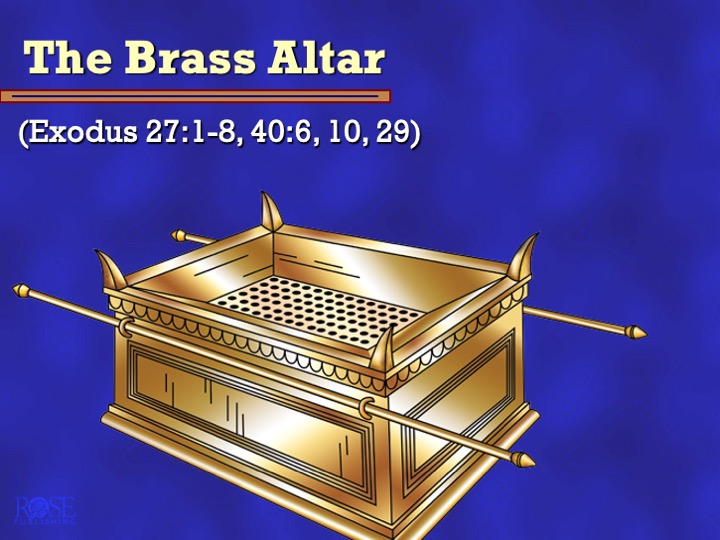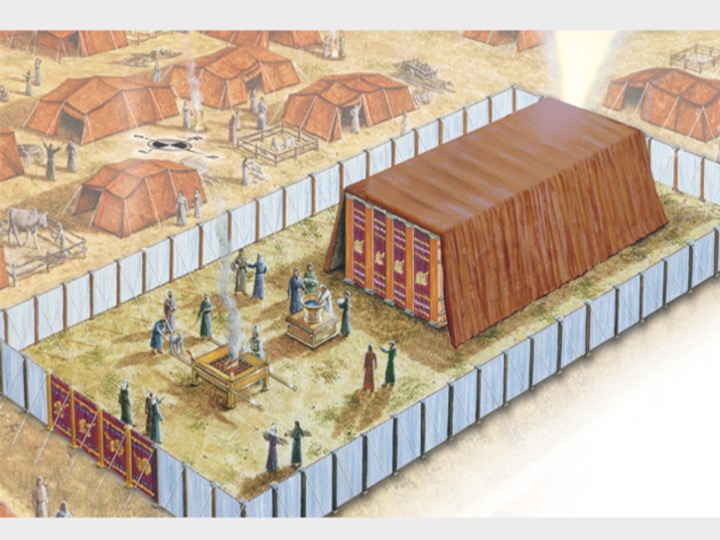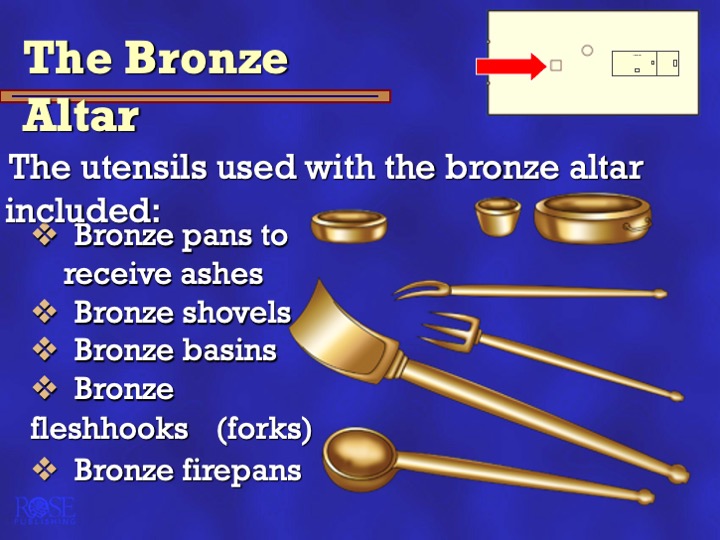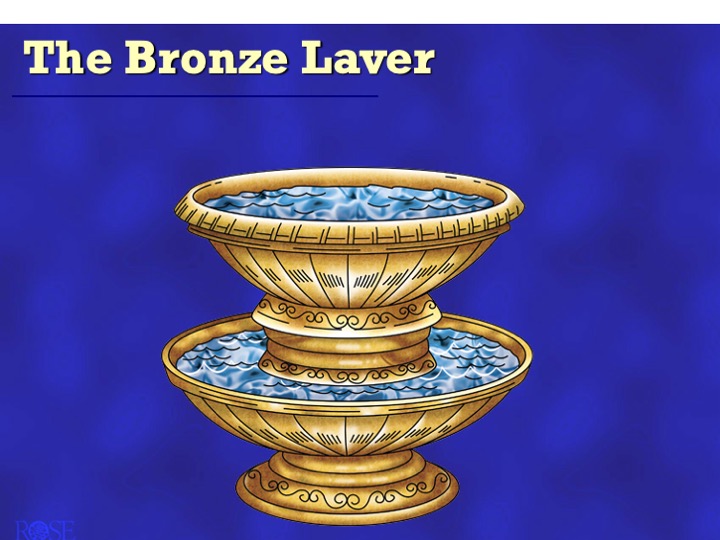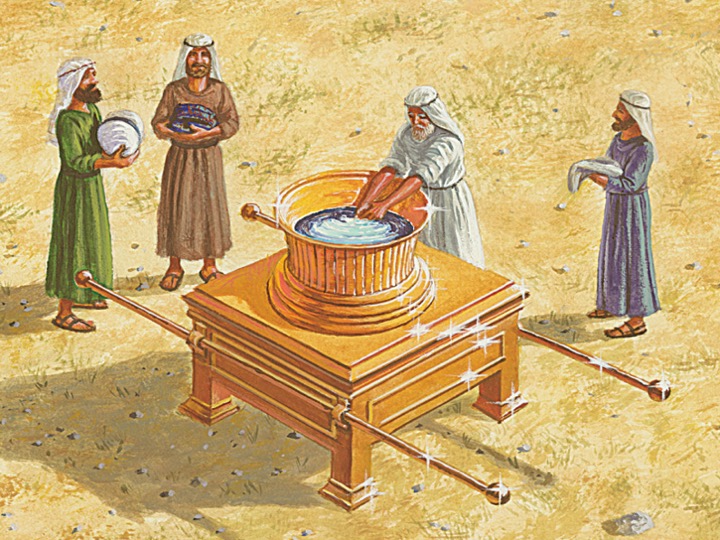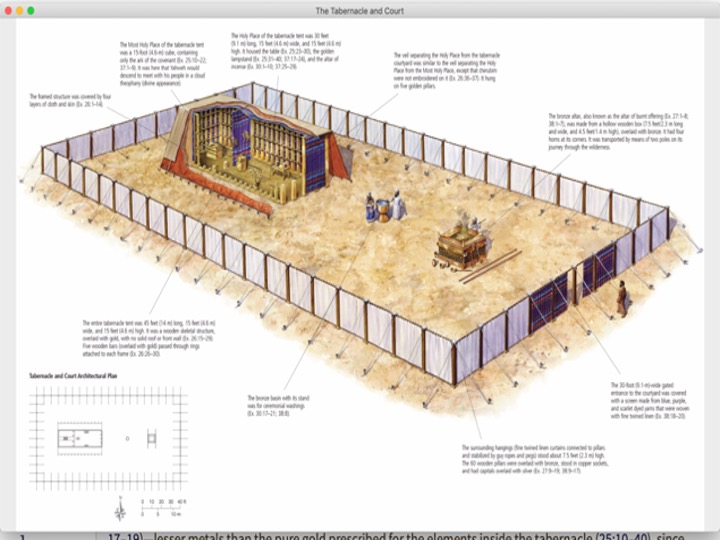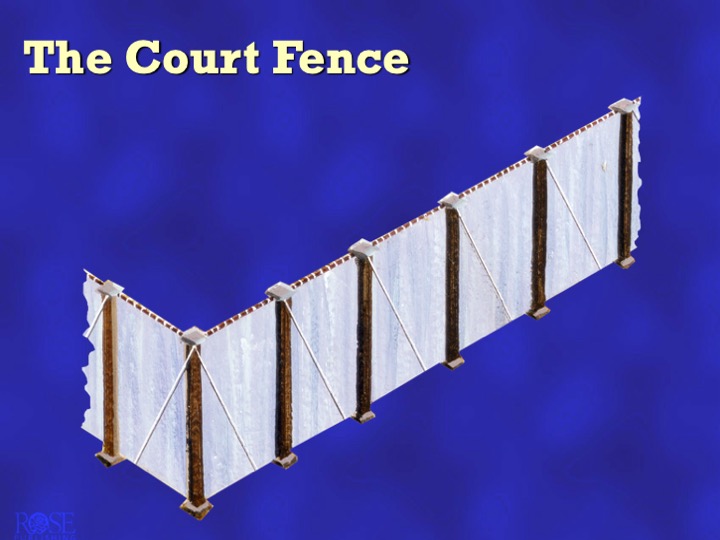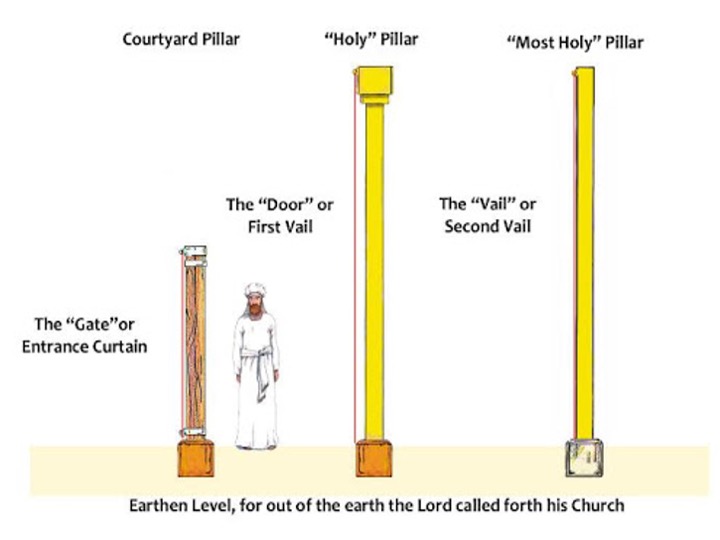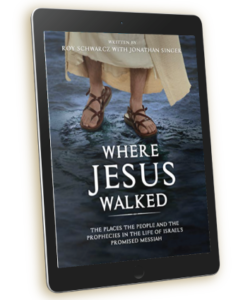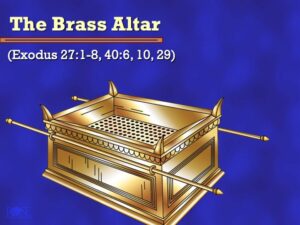
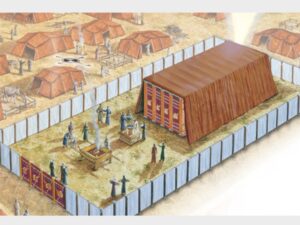
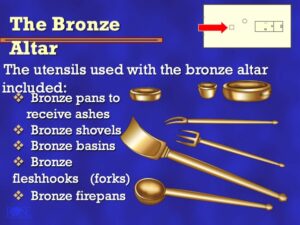
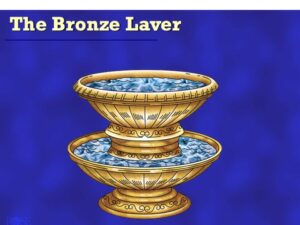

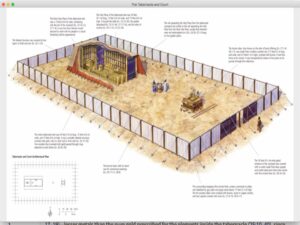
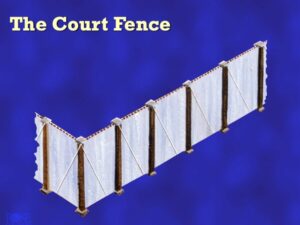
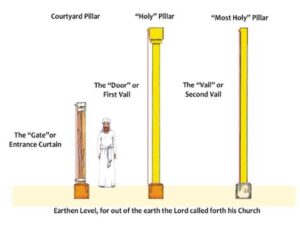
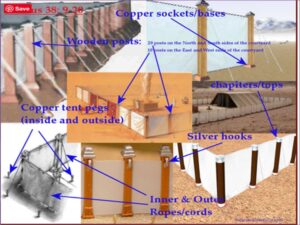
The greatest problem that confronts us is how do we approach God and find acceptance in God’s presence? Cain was cast from his presence and dwelt in the land of Nod, which means shaking or insecurity, and it is the same for all of us without a relationship with God. God has made it possible to find forgiveness and reconciliation, but it must come in the way that He has appointed. As we continue our study of the Tabernacle, we see that the way He appointed for Israel, foreshadows the way for us today.
V 1-7 The Altar of Burnt Offering symbolized the need for atonement in order to be reconciled with God. The blazing Altar consumed every sacrifice placed on it, just inside the entrance of the Courtyard (Illus 1-3). The ministry of substituting the life of an animal in exchange for one’s sins was God’s means for justice and mercy to meet. The Altar was made of acacia wood 7½ feet square and 4½ feet high. The horns of the Altar were at the four corners all of one piece. The Altar was overlaid with bronze. Four bronze rings for carrying the Altar were made for the corners which held the carrying poles. The carrying poles were made of acacia wood, overlaid with bronze, and inserted into the rings for carrying the Altar. The Altar was hollow allowing it to be lighter and easier to carry. The utensils were made of bronze as was the grate that was placed under the ledge half-way up the Altar (Illus 3). The Altar symbolizes the need of man for atonement pointing to the reality that our sins have separated us from God (Isaiah 59:2; 64:7).
V 8 The Bronze Wash Basin or Laver pictured cleansing and forgiveness of sin. The Laver was made with a bronze stand and with mirrors given by the women who served the Lord (Illus 4-5). It was located between the Altar of Burnt Offering and the Outer Veil. A priest could not serve the Lord and His people without first being cleansed. Today we are called to wash before we can serve the Lord and others, our laver is God’s Word which cleanses us. We constantly need to be reminded of who we are—redeemed sinners who need to be regularly washed, cleansed, and forgiven of our sin.
V 9-20 The Courtyard pictured the great truth that God can be approached (Illus 6). Who is like the Lord our God? There is none like Him. He is the Eternal Lord of the universe, who created and sustains to all. He is omnipresent, omniscient, omnipotent, all powerful. He is holy, perfect in righteousness and purity. How can One who is so high and glorious be approached by sinful men? God made a way for people to come to Him through the design and construction of the Tabernacle.
The south side was made of 150 feet of linen curtains. Twenty posts were made and set in 20 bronze bases. Silver hooks and bands were made to hold the curtains. The north side was made of 150 feet of linen curtains. Like the south side, 20 posts were made and set into 20 bronze bases. Silver hooks and bands were made to hold the curtains. The west end of the Courtyard was made of 75 feet of linen curtains. Ten posts and 10 bases were made along with silver hooks that held the curtains. The east end was made of 75 feet of linen curtains (Exodus 38:13). The curtained walls on each side of the entrance were made with one side 22½ feet long and the other side also 22½ feet. Three posts and 3 bases were made for each side of the entrance. All the curtains of the courtyard were made of fine linen. All the posts and bases were made of bronze while all the hooks and bands were made of silver. The tops of the posts and bands that held up the curtains were made of silver (Illus 7-9).
The entrance or door to the Courtyard was made of linen and embroidered with blue, purple, and scarlet yarn. It was made 30 feet long and 7½ feet high just like the Courtyard walls. The builders made four posts and set them into four bronze bases. Hooks and bands of silver were made and the top of each post was overlaid with silver. The tent pegs for the Tabernacle and Courtyard were made of bronze.
The Tabernacle was set in the middle of the camp and thus easily accessible to any who wanted to draw near to God for reconciliation and fellowship with the creator of the universe. He just had to be approached in His appointed way.
V 21-31 The inventory used in building the shows how faithful God’s people were in their labor for God. Moses summarized everything that went into building the Tabernacle. The Levites compiled the figures and Ithamar recorded their findings. Bezalel was superintendent of the project assisted by Oholiab from the tribe of Dan. Bezalel was the grandson of Hur from the tribe of Judah and he made everything as the Lord commanded. Oholiab was a craftsman skilled at engraving, designing, and embroidering.
The total amount of gold given to build the Tabernacle was 2,200 pounds. The silver given was about 7,545 pounds. The silver was collected through the census tax or ransom tax. This tax was 1/15 of an ounce of silver and was collected from every man 20 years or older, a total of 603,550 men. The silver was used to make the 100 bases for the sanctuary walls and for the posts supporting the inner curtain (about 75 pounds for each base). About 45 pounds of silver was used to make the bands and hooks as well as overlay the posts. The gifts of bronze totaled about 5,310 pounds which was used to make all the bases for the posts at the entrance to the Tabernacle, the Bronze Altar and its utensils, for the Courtyard, and for the curtain at the entrance of the Courtyard. The bronze was also used to make the tent pegs for the Tabernacle and for the Courtyard.
We learn from this that God will always supply what is needed to do His work. He provides His priests and His people all through His Spirit.

